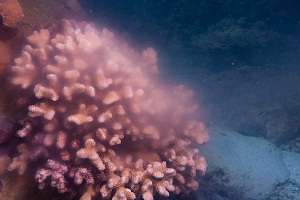More 'choice' than chance in broadcast spawning

Chemical signals used by the eggs of broadcast spawning invertebrates to assist sperm in fertilisation could also play a role in sexual selection, or mate choice.
In a review of the known functions of sperm-egg interactions of broadcast-spawning invertebrates – those who release gametes into water for external fertilisation – UWA researchers highlighted the taxa's potential to act as model species for studies on sexual selection.
The authors had previously determined the sperm of mussels effectively 'smelt' their way towards genetically compatible eggs, which showed egg-derived chemoattractants not only functioned to attract sperm from the same species, but also from those of the same species offering greater fertilisation prospects.
In their most recent research authors Jonathan Evans and Craig Sherman, from UWA's Centre for Evolutionary Biology, drew on empirical findings and anecdotal evidence to argue gamete-level signals are likely to be targets for mate choice.
"We have known that eggs signal their identity via cell surface proteins and chemoattractants for decades, but few people had ever posed the question of whether such signals might also facilitate mate choice," Dr Evans says.
Given the difficulties faced by sperm in locating and fertilising eggs from females of the same species due to aquatic environment and presence of other species, the eggs of many taxa release chemical signals, or chemoattractants, and gamete recognition proteins (GRPs) to attract sperm and mediate compatibility.
As broadcast-spawning is a function of many sedentary marine invertebrates, the authors argue since there is little to no opportunity for prezygotic mate choice; the only opportunity for mate choice to take place is through the release of gametes and associated reproductive fluids during spawning.
The study cites as evidence several papers showing chemoattractants increase gamete encounter rates by effectively increasing the size of an egg and maintaining a barrier to fertilisation by other species.
Additionally, the chemical signals could facilitate selection for compatible gametes by signalling egg fitness or fertility or by reducing detection from competing sperm. The authors argue sperm act differently in response to the chemical cues of different females—swimming faster and straighter towards those they are most compatible with.
There is also evidence GRPs are active in sexual selection by ensuring fertilisation by the most compatible individual in a population, or between individuals from different populations—preventing hybridisation and inbreeding.
Dr Evans says the findings have "profound" implications in the field of evolutionary biology and could have an impact on the understanding of reproduction for other species.
"Given the ubiquity of gamete-level communication systems in many species, including humans, our ideas may extend beyond just broadcast-spawning invertebrates," Dr Evans says.
Provided by Science Network WA















